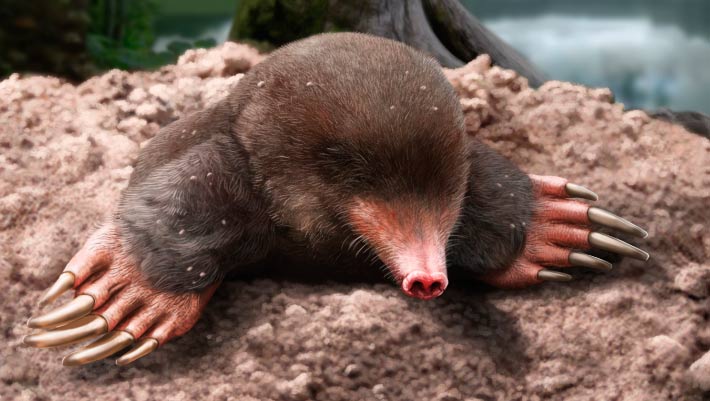Now Reading: 3.25-Million-Year-Old Fossil Reveals New Mole Species
-
01
3.25-Million-Year-Old Fossil Reveals New Mole Species
3.25-Million-Year-Old Fossil Reveals New Mole Species

Swift Summary
- Paleontologists have discovered a new genus and species of mole, Vulcanoscaptor ninoti, from a Pliocene-aged site in Girona, Spain.
- The specimen dates to approximately 3.25 million years ago and is one of the moast complete mole fossils ever found in Europe.
- Fossil remains include the jaw, torso portions, forelimbs, hindlimbs, and several connected anatomical structures preserved in remarkable condition.
- Researchers used high-resolution microCT scanning for detailed analysis of anatomical features without damaging the fossil.
- Findings reveal this species had highly adapted limbs suited for burrowing and possibly some aquatic capabilities due to lacustrine sediment preservation clues.
- Vulcanoscaptor ninoti is closely related to modern North American species within the Scalopini tribe,suggesting possible past intercontinental migrations of moles during evolutionary history.
- The revelation challenges prior assumptions about limited dispersal abilities among moles and indicates more complex evolutionary patterns involving diverse adaptations across continents.
- Study findings emphasize the significance of exceptional fossil sites for documenting rarely preserved small mammals like moles.
Image: Life reconstruction image by Jesús Gamarra / IPHES-CERCA.
Indian Opinion Analysis
The identification of Vulcanoscaptor ninoti is intriguing not only due to its remarkable state of preservation but also as it offers insight into mammalian evolution on a global scale-highlighting previously underestimated migratory capabilities across continents during ancient eras. This discovery underscores how paleontology can reshape scientific narratives around species distribution and adaptive evolution over time while highlighting gaps left by traditional assumptions about their behaviors or range limits.
for India specifically-a country home to diverse geology-it reinforces the importance of investing in paleontological research domestically as similar groundbreaking finds may emerge here with deeper exploration efforts at prehistoric sites like those near siwalik Hills or Rajasthan’s Thar Desert areas known for fossils spanning millions of years.
Read More: Source Link





















